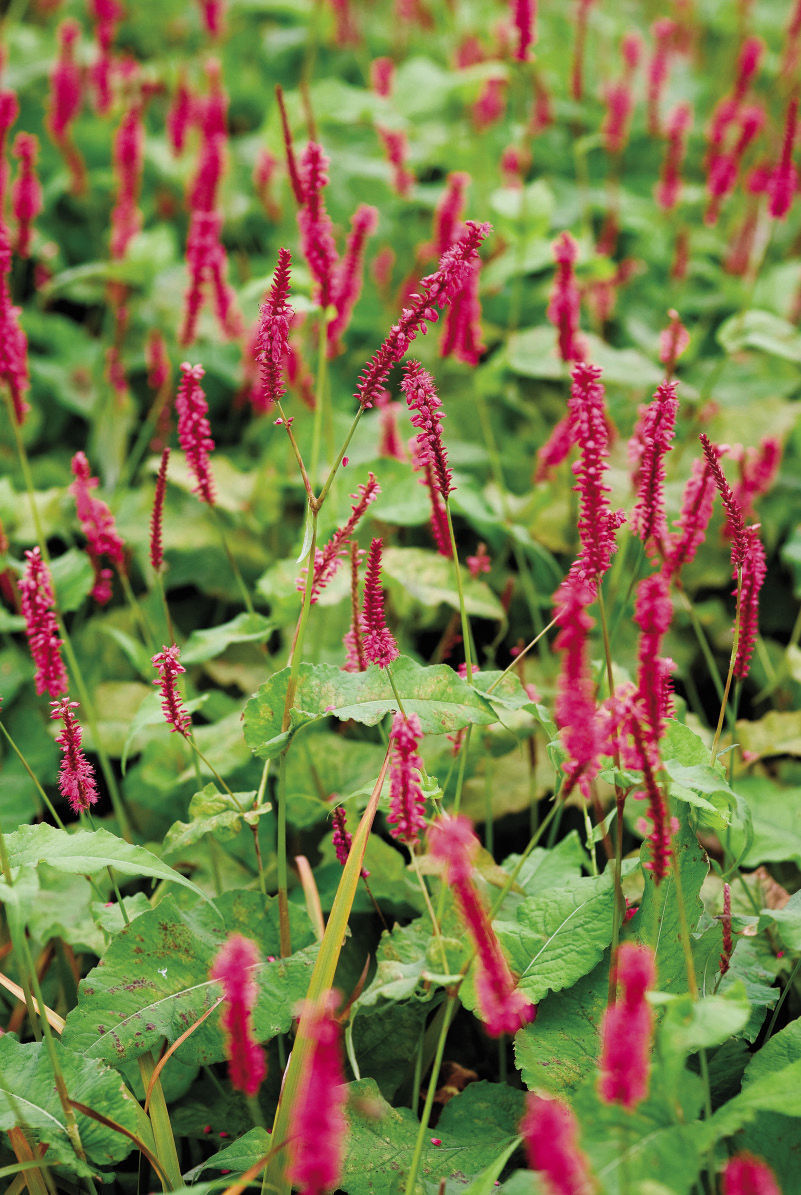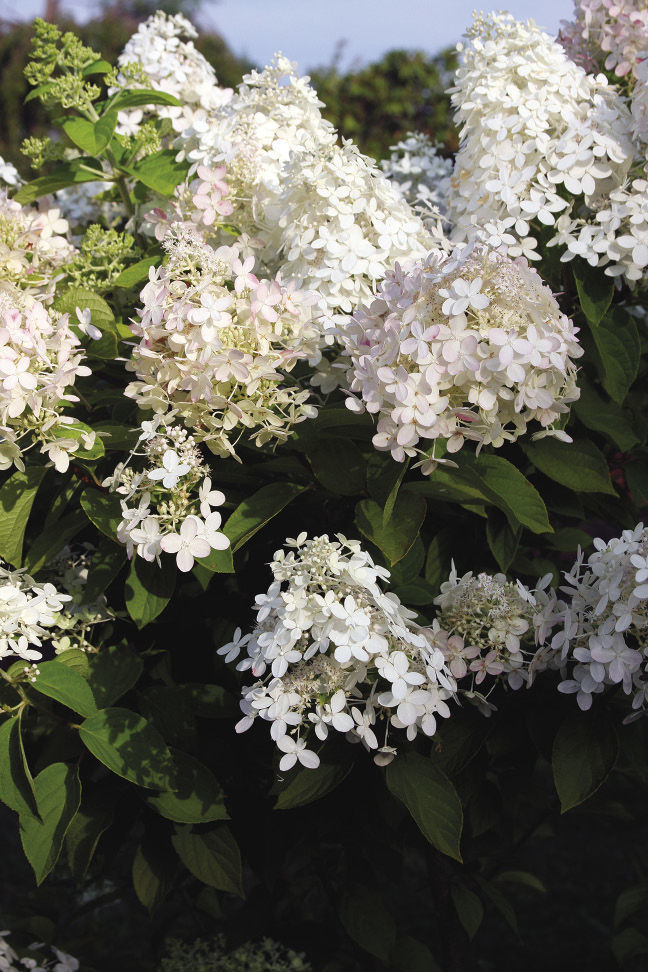
1. ‘Green Mountain’ Boxwood
Name: Buxus ‘Green Mountain’
USDA Hardiness Zones: 5 to 9
Size: Up to 5 feet tall and 3 feet wide
Conditions: Full sun to partial shade; moist, well-drained soil
If I could grow only one broadleaf evergreen, ‘Green Mountain’ boxwood would be it. Tough, drought tolerant, and deerproof, it is excellent when planted close together for hedging or used singly as an accent or anchor plant. Untouched, it forms a broad, rounded cone of rich, lustrous green. But I shear mine annually, in early spring, for a crisper look and tighter shape.

2. ‘Firetail’ Mountain Fleeceflower
Name: Persicaria amplexicaulis ‘Firetail’
Zones: 3 to 8
Size: 3 feet tall and wide
Conditions: Full sun to partial shade; moist, well-drained soil
If you wish for a brawny, leafy perennial that flowers nonstop from June to October, consider ‘Firetail’ mountain fleeceflower. Good in large, pure masses (if you have enough space) or when placed randomly among other vigorous growers, the plant forms a dense, bushy mound topped with spiky, pencil-thin blooms of scarlet pink. Watch out for Japanese beetles on this big, robust perennial.

3. ‘All Gold’ Japanese Forest Grass
Name: Hakonechloa macra ‘All Gold’
Zones: 5 to 9
Size: 1 foot tall and 2 feet wide
Conditions: Partial shade; moist, well-drained, humus-rich soil
If there’s a more elegant grass on the market than Japanese forest grass, I can’t imagine what it would be. ‘All Gold’, one of several good cultivars available, is vigorous and stout, and possibly the best of the batch. With its graceful, cascading habit, it quakes and shimmers magically in the slightest breeze. I grow it beneath a favorite old crabapple in combination with native wood asters (Eurybia divaricata, Zones 4–8).

4. ‘Limelight’ Hydrangea
Name: Hydrangea paniculata ‘Limelight’
Zones: 4 to 8
Size: Up to 12 feet tall and 6 feet wide (unpruned)
Conditions: Full sun to partial shade; moist, well-drained, humus-rich soil
‘Limelight’, a cultivar of the popular panicle hydrangea, offers a subtle flush of green in its flowers and a faint but sweet perfume. If left unpruned, the shrub displays a gangly, twiggy mess in winter. Because the species blossoms on new growth, prune it back to about 2 feet tall in early spring. The plant will burst forth with an abundance of stout branches, topped in August with sumptuous, rounded flower cones that fade to rosy pink in September.
Dean Riddle is a garden designer in the Catskill Mountains of upstate New York.
Photos, except where noted: Michelle Gervais; Victoria Firmston/www.gapphotos.com; Steve Aitken


















Comments
Log in or create an account to post a comment.
Sign up Log in